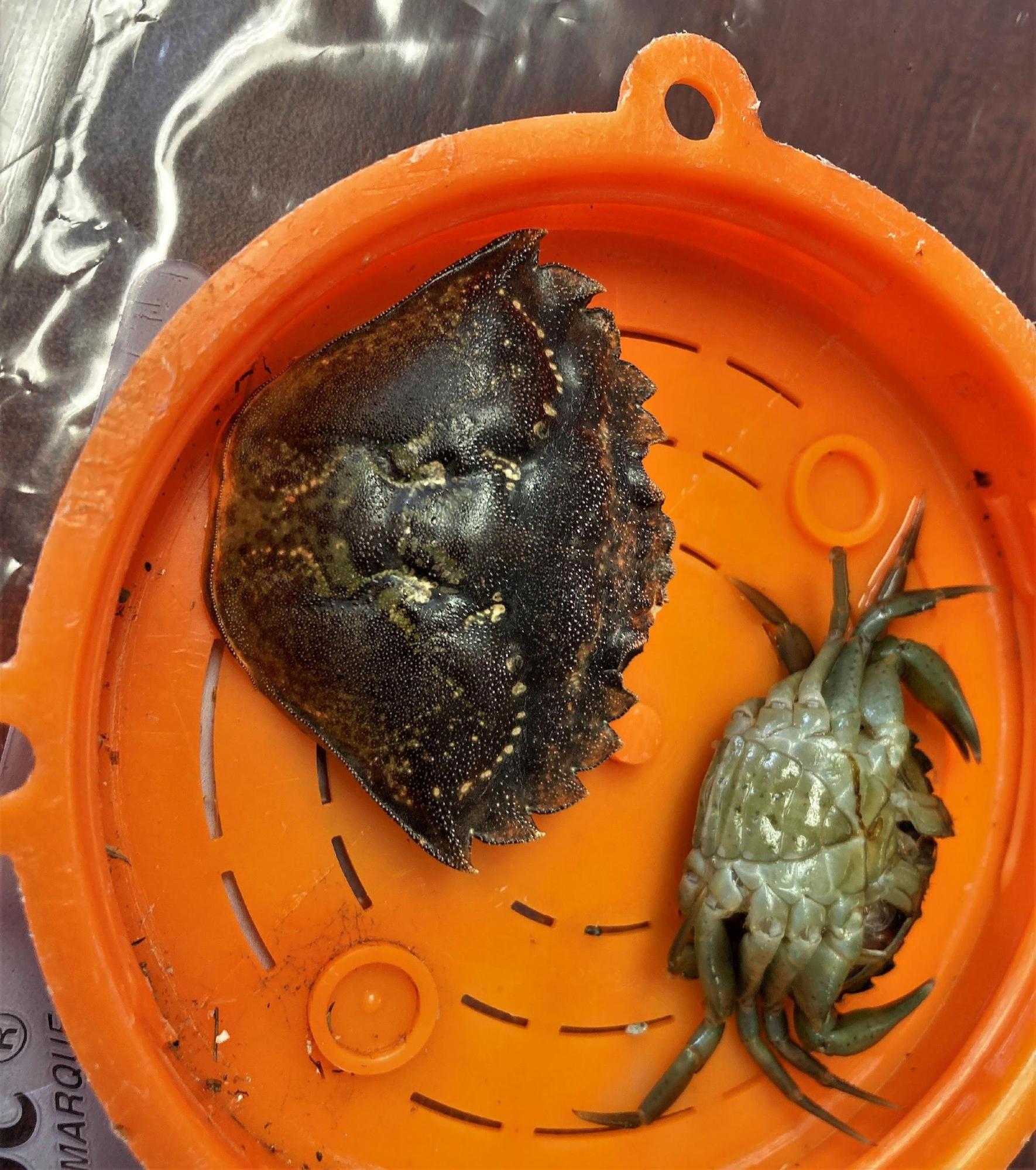Invasive crabs, climate change headline Alaska Invasive Species Workshop

An invasive green crab (Carcinus maenas) carapace sits next to a whole live crab.
Julie Stricker
907-474-5406
Oct. 20, 2023
The 2022 detection of the invasive European green crab in Southeast Alaska and the effect of climate change on the prevalence and impacts of species invasions will be highlighted at the 2023 Alaska Invasive Species Workshop.
The workshop, themed “Invaders on the Edge,” is scheduled for Nov. 7-9 at Harrigan Centennial Hall in Sitka, with sessions each day from 8 a.m. to 5 p.m. A virtual option also is offered, said Gino Graziano, an agent with the University of Alaska Fairbanks Cooperative Extension Service.
The service is coordinating the workshop with the Alaska Invasive Species Partnership, an informal statewide group of agencies, organizations and individuals.
“The annual workshop helps coordinate invasive species management efforts and promotes awareness of new concerns, particularly those that could cause economic or environmental damage,” Graziano said.
Speakers will highlight invasive species science, management and planning, while identifying emerging issues statewide. Topics include European green crab detection in Alaska, invasive plants and wildfire, early detection and rapid response efforts, biocontrol research, citizen science, community-driven stewardship and more.
Cascade Sorte, an associate professor at the University of California at Irvine, will deliver the keynote presentation on how climate change may influence the risk of invasion by nonnative species and range shifting by native species. Sorte also will share tools for the management of nonnative species.
Sorte has studied the impacts of global change in Southeast Alaska and served as a Scientist in Residency Fellow at the Sitka Sound Science Center in 2014. Her work received the George Mercer Award from the Ecological Society of America.
In 2022, Alaska became the most northerly location along the U.S. Pacific coast to confirm the presence of Carcinus maenas, commonly known as European green crab. These aggressive Post-It Note-sized predators of nearshore shellfish have slowly expanded their range since they were first detected in San Francisco Bay in the late 1980s. European green crabs are listed among the 100 worst invasive species in the world by the International Union for the Conservation of Nature.
Agencies and partners in coastal Alaska have been engaged in community-based early detection of the crabs. Metlakatla Indian Community’s Department of Fish and Wildlife and the National Oceanic and Atmospheric Administration Fisheries Alaska Region first discovered the crabs in Alaska during a survey of Tamgas Harbor, on the Annette Islands Reserve in southern Southeast Alaska. Metlakatla and the Alaska Department of Fish and Game have expanded survey efforts since then. Metlakatla has also intensively trapped the crabs.
Visit alaskainvasives.org for more workshop information and to register. For more information, Graziano at 907-786-6315 or gagraziano@alaska.edu.
072-24


